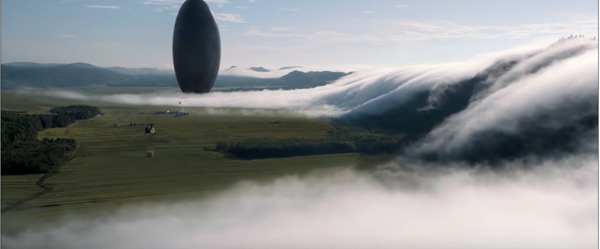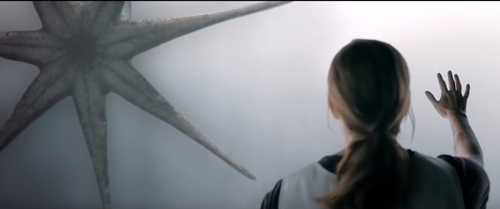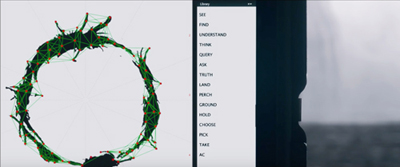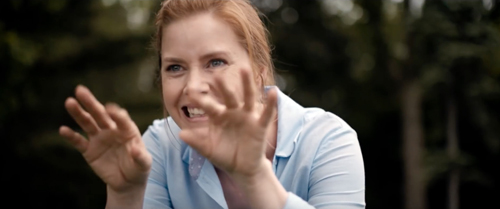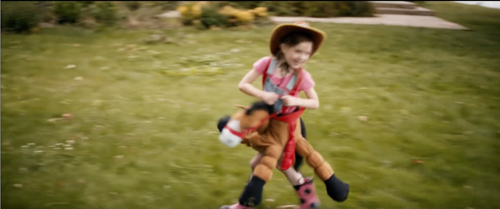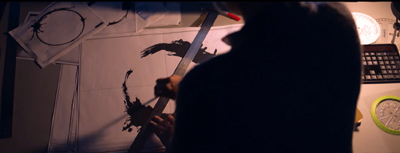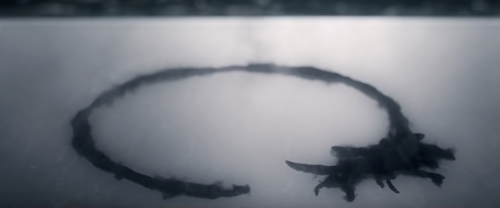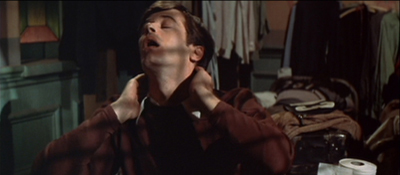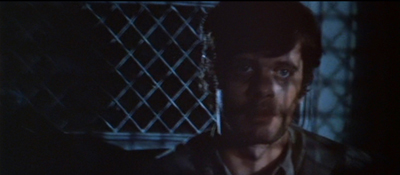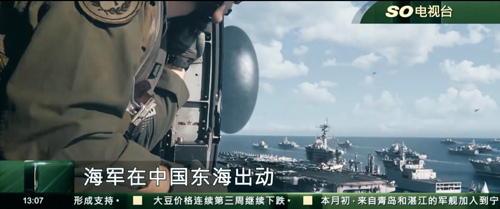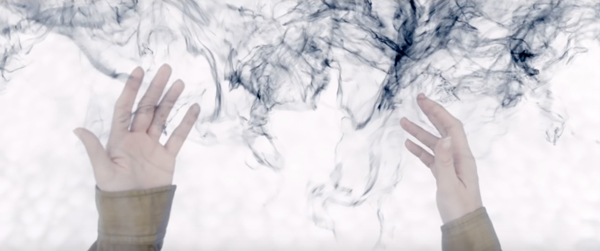Arrival (2016).
DB here:
A lot of today’s movie storytelling is nonlinear. Filmmakers rely on flashbacks, replays, and voice-overs in order to shape our experience, sometimes in fairly daring ways. In Hollywood these strategies got consolidated in the 1940s. Or so I argue in my Reinventing Hollywood, now in copy-editing (or as the University of Chicago Press calls it, copy editing).
The question today is the same as back then: How do ambitious filmmakers handle these conventions? I think the ambitious writer or director faces at least three tasks.
How do I innovate—that is, how do I treat time shifts in a fresh way?
How do I motivate the shifts—that is, justify the scrambling of chronology?
How do I make the new version clear enough for audiences to follow?
Novelty, motivation, and clarity seem to me essential considerations for a filmmaker who wants to play with time and the viewpoint shifts that often come with it.
I’m not alone in thinking that Arrival succeeds in creating its particular engagement with the audience by tackling my three tasks. Director Denis Villeneuve and screenwriter Eric Heisserer innovate in handling time, and they in turn carefully motivate the device and find ways to make it clear to the audience. Today I want to consider how this all works. I have to assume you’ve seen the film, so of course there are spoilers.
Back to what future?
Cinema didn’t invent broken timelines; they’ve been used in literature for centuries. The Odyssey has blocks of flashbacks. Literature benefits from the fact that language has simple and direct ways to signal jumps in time.
For example, the writer working in English can make flashbacks clear though time tags and verb tense. Take this passage from John Le Carré’s novel Our Kind of Traitor. We’re told that on Sunday morning an anxious Perry Makepiece is climbing into a chauffeur-driven Mercedes. Then:
Last night, returning to the Deux Anges from their supper party, Perry had caught Madame Mère’s boot-button eyes peering at him from her den behind the reception desk.
“Last night” tells us we’re in an earlier period, and that information is reinforced by the past perfect tense of “had caught.” Page layout helps too: the entire flashback to the previous night is blocked out within extra spaces separated by a centered ★.
After recounting what happened when Perry returned to his hotel last night, Le Carré returns to the present time, the narrative Now, with a turn to the simple past tense:
The Mercedes stank of foul tobacco smoke.
Apart from the change of tense, the Mercedes mention reminds us of Perry’s morning trip. In addition, the shift back to the present opens a new section marked by ★.
On my three dimensions: There’s nothing innovative about this instance, though Le Carré will try some unusual things elsewhere in the book. The flashback is motivated by Perry’s remembering last night, and it’s made clear to the reader through repetition of several cues.
But what do we do with this passage?
I remember the scenario of your origin you’ll suggest when you’re twelve.
The tenses are out of whack, thanks to that “you’ll.” Then there’s the very meaning of the word “remember.” (Replacing the phrase with “I imagine.”) How can you remember something that has yet to happen? This isn’t just a casual slip. The speaker goes on to report an entire conversation that uses the future tense: “you’ll say bitterly,” “I’ll say,” “That will be in the house on Belmont Street,” and so on.
This passage comes near the start of Ted Chiang’s “Story of Your Life,” the source of Arrival. The story is what literary scholars call an apostrophe, a discourse addressed to an absent person. Louise Banks explains how her daughter came into existence. The story begins with Louise’s husband asking one evening, “”Do you want to make a baby?” It’s this point in time that’s marked as the present (and is rendered in present tense), but the bulk of the story shuttles between the past and the future. From the benchmark moment we get, in other words, flashbacks alternating with flashforwards.
On my three-dimensional scale, Chiang gets credit for innovation. Stories told in the future tense are pretty rare, especially when the events are presented as memories. And he makes the narrational premise clear. After a few pages, it’s established that Louise purports to know things yet to happen. The tenses cooperate: Present for the baby-making moment, past tense for the past events, future for the future ones.
We’re used to characters who know their past, but how can one know her future? For the story-maker that reduces to: How to motivate Louise’s knowing the future?
The answer is aliens. In the past, Louise met her husband when floating seven-legged creatures came to earth. As a linguist, she was assigned to learn the Heptapods’ language. Gradually she discovered that they had a mentality that refused causality and sequence in favor of a holistic view of time. Their language, to put it crudely, gave them access to past, present, and future.
By learning their language Louise absorbed, to some extent, their world-view. (Yes, the untenable Sapir-Whorf hypothesis [4]is invoked.) Her precognition allows her to know, moments before she and her husband conceive the girl, what her daughter will do from her childhood right up to her early death. Louise also knows that she and her husband will divorce and find new partners. For us, these episodes are rendered as flashforwards from the Now, even though for Louise they are, paradoxically, memories (of things yet to happen).
Chiang’s story explores the emotional effects of knowing the future and deciding not to try to change it. For all I know, this may be another innovation in the realm of speculative fiction. Most time-travelers seek to alter the past or the future, but Louise is aware of the paradoxes of time travel. If you know the future, you can freely decide to alter it by choosing differently at crucial junctures. Marry somebody else, and you’ll change what happens afterward, so you didn’t really know the future. But Louise comes to believe that free will is a part of linear, causal thinking, the sort that the Heptapods have given up.
The existence of free will meant that we couldn’t know the future. And we knew free will still existed because we had direct experience of it. Volition was an intrinsic part of consciousness.
Or was it? What if the experience of knowing the future changed a person? What if it evoked a sense of urgency, a sense of obligation to act precisely as she knew she would?
The Heptapods know that they will need help from Earth in 3000 years, and they presumably know that they’ll get it, but to fulfill that future they need to ask. The story’s analogy is to the daughter’s wanting to re-hear a story she knows by heart. As a story reader replays a known tale, the aliens perform the incidents that make things inevitable.
So Louise accepts her role in playing out whatever future is predetermined. For this reason she can address her (future) daughter with foreknowledge of the pains and delights that are coming, accepting them as part of a seamless whole.
Image + sound + time
Lacking a tense system like language, cinema has devised other time signals. In the classic flashback we get a combination of them. We’re presented with a speaking or remembering character, a track-in to her, perhaps some music, a hint in the dialogue that we’re going into the past, a dissolve, perhaps a voice-over indication, and then a scene obviously situated in an earlier period. Filmmakers have discovered ways of altering some cues (cuts replace dissolves, tight close-ups replace track-ins) and deleting others (music and voice-over seem fairly optional now). Other cues are added for clarity, such as a different color palette for scenes in the past, or perhaps slow-motion imagery, or sound from the past that leaks in over imagery in the present.
Of course films use written and spoken language too, and so they can deploy tenses and time tags. Sometimes that can help us understand the time status of the scenes we’re seeing.
Voice-over is very helpful here. Take another Le Carré example, this time from Fred Schepisi and Tom Stoppard’s adaptation of The Russia House. Play the clip below and you’ll see what I mean.
Katya’s delivery of the covert manuscript, given on the image track, seems at first to be in the present. But the voice-over office conversation, only gradually shown through intercutting, is later than the Moscow incidents we see. So the present, the opening Now, is established on the soundtrack, while the image is in the past. As in fiction, the twin cues of verbal tense (“she visited”) and a time tag (“a week ago”) confirm the status of the Bookfair scene. The innovation comes when Stoppard and Schepisi don’t frame the Moscow scene by offering us the present-time office conversation before we see Katya–in effect, establishing the Now before showing us the Then. It’s an economical tactic of exposition, an elliptical revision of the phone conversations about the police investigations in M.
A voice-over can be in same time period as the images, of course, if it’s an inner monologue, a report on what a character is thinking at the moment. But voice-over commentary is often positioned as in the present with the images assumed to be in the past.
The voice-over present can be specified, usually through a lead-in scene showing the speaker recounting or recalling things at a particular time. Or the voice can be in a vague present, a zone we take as simply “after the events of the story.” It’s this no-man’s-land Now that leads us astray in Laura and other tricky films [6] from the 1940s onward. Uncertainty about who’s speaking from when can be a source of interest in its own right. In Road Warrior, the revelation of the source of the opening voice-over provides the final surprise of the film.
So Heisserer and Villeneuve had an opportunity to follow Chiang in using the future tense in the voice-over for Arrival. It would surely have been an innovative move for a film. But they don’t do it. Why?
From premise to twist
Flashbacks are temperamental little buggers. Hard to know when and how to use them.
Eric Heisserer, 150 Screenwriting Challenges [8]
Heisserer was a keen fan of Chiang’s story and spent years trying to get backing for a film version. He recounts various difficulties in online interviews (here [9] and here [10], for example), but I want to focus on a couple of other problems he faced.
In a general way, the film respects the thrust of the story. At the close, you realize that Louise has gained the ability to anticipate the future, thanks to learning Heptapod. But on a fine-grained basis, the film doesn’t spell out her ability as frankly or as early as the story does.
The first image, a view out onto the patio and the lake, shows no people, just a table with a wine bottle and a couple of glasses. Louise’s voice-over does address someone absent: “I used to think this was the beginning of your story.” But the point in time and the person addressed are far less specific than in the literary version. Then we get a quick burst of images of a baby, then a little girl playing with Louise, and soon a young woman lying dead in a hospital bed. This cascade of impressions ends with a shot of Louise walking mournfully down a hospital corridor, followed by a fade-out. Fade up on her striding into a campus building and attending her lecture. Over this we hear her voice-over.
But now I’m not so sure I believe in beginnings and endings. There are things that define your story beyond your life. Like the day they arrived.
And then we’re confronted by the Heptapods, as broadcast on worldwide TV, and Louise’s getting the assignment to talk with them.
The first shot, of the patio, is enigmatic, but fairly soon we get the sense that Louise is addressing her dead daughter. We seem to have a classic prologue. (Compare the opening death of Starlord’s mother in Guardians of the Galaxy.) Across three minutes, we see a mother loving and losing her daughter. Our default assumption is that after the daughter’s death, she has become solitary and emotionally numb. She doesn’t interact with people on her way to her classroom, and when she goes home alone she watches TV reports with a kind of blank anxiety.
The film sets up a schema: The grieving mother needs to get out of herself, and the assignment to communicate with the aliens would seem to do that. Eventually she finds love with the physicist Ian Donnelly as well. This redemption schema is probably reinforced for some viewers by memories of Gravity (2013) [11], another movie about a withdrawn mother who channels her sorrow into heroic action.
As the alien encounters unfold, the film’s narration starts to sprinkle in more images of the lost daughter at different ages. But the images show up rather late. At about 48 minutes, there’s a brief, out-of-focus image of a baby; at about 51:00, a glimpse of the little girl wading. Not until about halfway through the film (57:00) is there a fairly sustained scene between mother and child, when the girl shows Louise a picture of her imaginary TV show. That’s when we learn that the father isn’t with them any more. Later shots of the daughter are salted through the scenes of the increasingly tense confrontation with the Heptapods.
Just as we’re encouraged to take the daughter’s birth, childhood, and death as a prologue that precedes the alien investigation, we’re inclined to take these interruptive shots of the girl as flashbacks. Louise seems to be remembering her daughter.
At about 82 minutes something happens that challenges our basic assumption. In another household scene, the daughter asks about the “science-y” term for a win/win situation, and Louise is stumped. The narration shifts us back to the tent at the site, Ian mentions the term “non-zero-sum game.” Then we’re whisked back to the scene with the daughter, and Louise repeats that.
I felt a bump there. If the scene with Ian’s use of the term comes after the death of the daughter, during the alien encounter, how can Louise “remember” it to relay it to the daughter? For many viewers (probably not all), this opens the possibility that the “prologue” tracing the daughter’s childhood takes place after the alien adventure, not before. The reinforcement for this, visible to me only on second viewing, is that the earlier glimpses of the girl’s growing up are always triggered by scenes showing Louise learning the Heptapod’s language.
The filmic narration creates a sort of duck/rabbit Gestalt switch [13]. Things we thought were past are future, things we thought were present are past. If the patio shot is the benchmark Now, the growth and death of the girl are the future and the Heptapods’ visit becomes a sustained flashback.
Now we see why Louise’s introductory voice-over lacks the future-tense sentences that are so startling in the novella. Including those would have been too strong a hint about the status of the mother-daughter shots. Instead, the opening voice-over uses only the past tense (“I used to think”) and the present (“But now I’m not so sure”). Another moment in the voice-over tilts us toward thinking of the image bursts later as flashbacks: we hear Louise murmur over the dead girl. “Come back to me.” Her yearning to reconnect to her daughter inclines us even more to consider the visions of the girl later as flashbacks.
Redundancy is your friend
Okay, pretty innovative—and an interesting departure from Chiang’s story. Instead of telling us at the outset that Louise has precognition, the film holds that as a surprise, and makes us think that her anticipations are actually memories. And we have motivation: as in the story, it’s the alien encounter that endows Louise with precognition. But what about my third consideration, clarity?
I said that not everybody will probably catch the echo of Ian’s “non-zero-sum game.” The last half-hour of the film devotes itself partly to reiterating the news that Louise can discern the future.
Her impulsive visit to the Heptapods late in the film explains why they dropped by. They know they’ll need humans’ help in the future, so they come to make that future happen. At the ninety-minute mark, one speaks, and we get a big old subtitle: “Louise sees future.” If you doubt the Heptapod’s insight, another flashforward soon shows Louise explaining to her daughter why her dad left. Louise “made a mistake” by telling him about a rare disease—presumably the one that would kill their daughter. We’re left to understand that after she told him that she knew their child was fated to die young, he couldn’t take it. The delayed exposition, judiciously repeated, lets the pieces fall into place. We may even start to surmise that Ian is to be that husband, earlier identified as a scientist.
Like the aliens’ sentences, the film is circular. Heisserer told Vox: [15]
When I completed the first draft and the bookends of the first three pages and the final three pages, it felt like I was drawing a narrative circle and I just closed the loop. That felt right.
The narration buckles the film shut by returning to the view of the patio, which is intercut with Louise and Ian embracing. Ian proposes that tonight they make a baby. The fact that Heisserer’s script displaces to the very end what was the opening of Chiang’s story is a fair index of the transformation he has wrought. What was a premise of the novella becomes a reveal in the film.
But the motivation is the same. Flashforwards aren’t exactly parallel to flashbacks, as far as viewer psychology is concerned. Flashbacks are assumed to be veridical unless there’s reason to doubt them (as in trial and investigation films, where people give differing versions of events). The default is that flashbacks really happened, unless there are contrary indications.
Flashforwards, on the other hand, can be of two types. They might proceed from the film’s external narration. In Easy Rider, Petulia, and They Shoot Horses, Don’t They? we get glimpses of future events that no character can know. In such cases, the images are usually enigmatic enough that we can’t be sure about the import of what we’re seeing. Flaming motorcycles, the protagonist tossing a bouquet into the water, a brief cutaway to a man in a police wagon (below, from They Shoot Horses): these are teases, not fully informative scenes, and they interrupt the main present-time action.
Alternatively, more identifiable flashforwards are usually motivated as a character’s precognition. They aren’t necessarily reliable. Flashbacks normally represent “actual” pasts, but flashforwards coming from mediums, psychics, or possessed children are only possible futures. Indeed, one task in such films is to prevent the apparent future from coming to pass, as in Minority Report and It Happened Tomorrow. The past is closed, but in subjective flashforwards, the future is usually open.
How, then, do we motivate trustworthy flashforwards? Here. by having infallible aliens certify them. Like “Story of Your Life,” Arrival assures us that Louise’s premonitions are accurate. It’s just that Chiang’s story proposes that early on and then shows how she achieved them. The film is trickier. It misleads us into thinking she has memories of the past when she is actually learning to see the future. She learns more quickly than we do, though eventually we catch up with her.
We’ve also learned that flashforwards can masquerade as flashbacks—if they’re deployed carefully enough.
Adding the ride
Explaining, very clearly, that Louise is knowing her future is only one task of the last stretch of the film. Another task is preventing a military attack on the aliens.
In Chiang’s story, the creatures simply leave. But Heisserer has explained that he felt the plot needed more conflict, so he added the prospect of brass hats eager to confront the visitors. The Heptapods, Louise suggests, have landed at various places around the world to induce nations to forget their differences in a common purpose. The Americans are suspicious, and General Shang of China breaks away from the alliance and takes steps to attack the ship near Shanghai.
Of the civil turmoil and military threat that fill out the plot, Heisserer noted in the same Vox interview: [19]
The story doesn’t really have any conflict of that nature. It doesn’t need to. It’s a lovely literary conceit in its own right and works without that drama.
However, our early attempts a building this narrative without that conflict added felt very flat, and felt like there were no stakes. There was no ride. The more we played with it, the more Denis and I both realized that if aliens did land on earth and the public didn’t get immediate answers as to what their purpose was, the more everybody would freak out.
In building this climax, the film varies crucially from Chiang’s premise. Now Louise seems to alter the future. She apparently summons the will to induce General Shang, at a future celebration of the successful mission, to give her his private cellphone number and tell her his wife’s dying words. Back in the past, Louise uses this new knowledge to induce the General to hold his fire. All this is presented in a classical ticking-clock drama of suspense and pursuit.
The device is a bit awkward; instead of visiting an actual future, Louise seems present at one where the General, against all plausibility, tells her things she supposedly already knows. And how she induces him to spill all this is unclear, at least to me. The climax also breaks with the original story’s idea that Louise doesn’t exercise free will but accepts her role in the course of time.
More often than one might expect, classically constructed films break some of their self-imposed rules in the rush to a climax. Invasion of the Body Snatchers (1956) is one of my favorite examples, in which the climax violates the story’s method of pod-cloning. Sometimes an exciting denouement or a shocking twist tends to make us forget not only plausibility but also the premises that have operated over the previous ninety minutes.
An unsympathetic critic could object to the injection of a chase, a deadline, and a last-minute salvation of the mission, as well as the one-world moral of the movie. But to enjoy Hollywood, as with enjoying friends and other aspects of life, you have to accept, and even come to enjoy, the flaws too. The center of the film remains our transmutation of sympathy for a grieving mother into sympathy for a woman who knows she will be grieving for a child yet unborn, and yet embraces her destiny. The formal strategies serve to vividly convey this reversal of feeling, in the process ennobling a character reconciled to the transient joys of life.
Kenneth Burke once characterized literary form as “the psychology of the audience.” Filmmakers, like all artists, have recognized this from almost the beginning, but it may seem that today’s creative community is more self-conscious than ever before. If “form is the new content,” as I’ve suggested before, it’s a welcome development. Filmmakers are exploring lots of possibilities for engaging our minds and emotions, while still striving to keep their stories understandable to a large audience. Arrival could not have been made in my sacred 1940s, but its deft innovations build upon a foundation that was laid then.
Thanks to conversations with Jeff Smith and Kristin about Arrival. Thanks also to Merijoy Endrizzi-Ray and Jacob Rust at Madison’s Sundance Theater [20].
Jeff Goldsmith has an enlightening interview with Eric Hisserer at Screencraft [21]. Ted Chiang’s novella is in the collection Stories of Your Life and Others. [22]Burke’s discussion is in the essay, “Psychology and Form.” [23]
The first quarter of Le Carré’s Our Kind of Traitor consists of an “intercut” sequence between past events and present interrogation that, in its free use of tenses, time tags, and other devices, seems to aim at a literary equivalent of the Russia House film opening. A pity that the recent film of Our Kind of Traitor didn’t try for a cinematic equivalent.
For more on modern treatments of narration and plot structure, try here [24]. For further discussions of 1940s treatments of time-juggling, here are some blog entries [25].
P.S. 3 December 2016: The original entry didn’t use Minority Report or It Happened Tomorrow as examples of averting the future. They’re corrections to my original mention of Don’t Look Now, which was not an accurate example. David Cairns wrote to remind me of that, and to point out that the glimpse of the future we get in that film is in an interesting way akin to what we get in Arrival, and I hadn’t noticed that. For those who haven’t seen Don’t Look Now, I won’t add to an already spoiler-heavy entry. I’ll simply thank David, whose exemplary blogsite Shadowplay [26] (currently hosting a blogathon under the rubric of The Late Show) is a must for every film lover. His new film, The Northleach Horror, is nearing completion; details here [27].
Arrival (2016).
